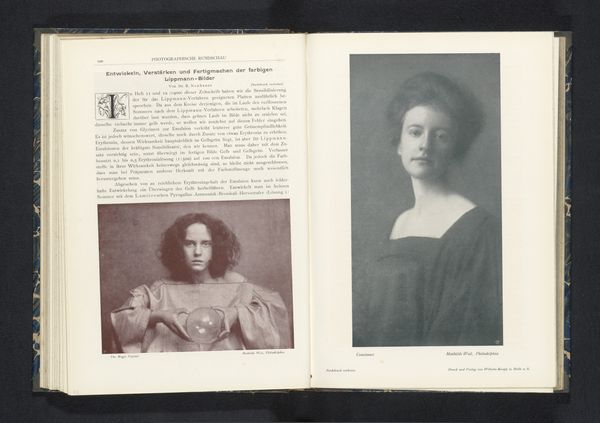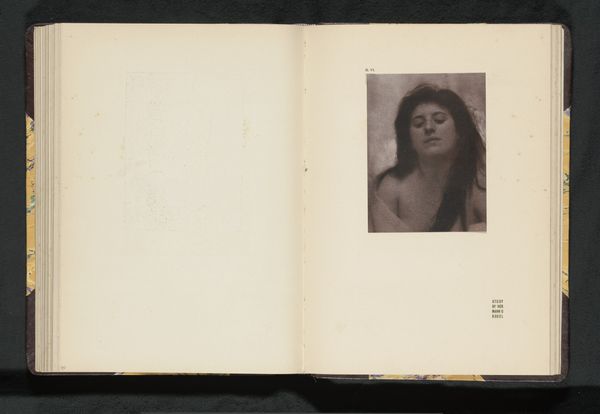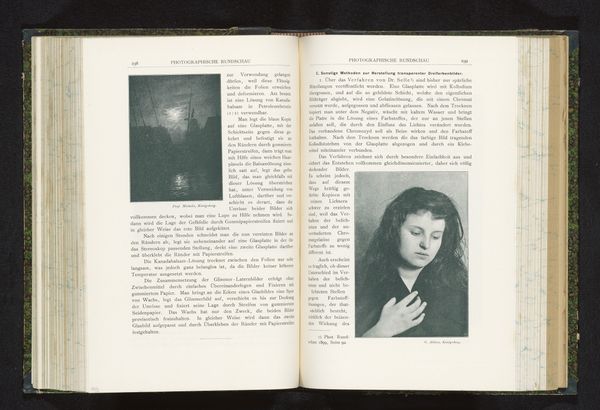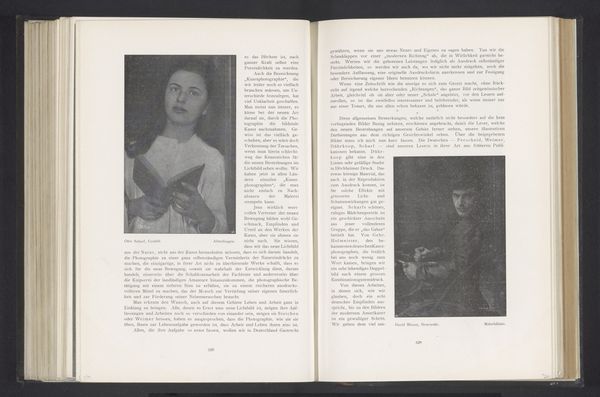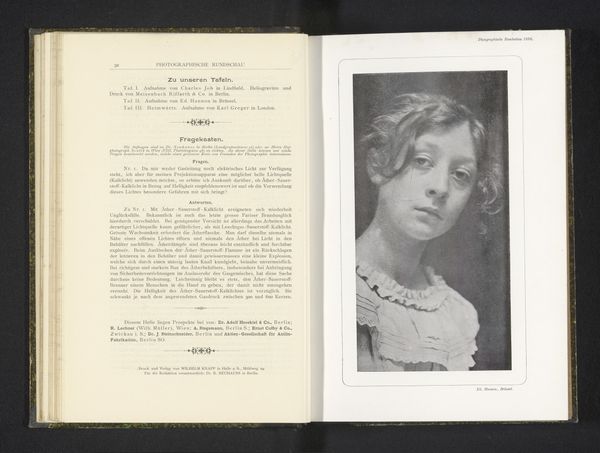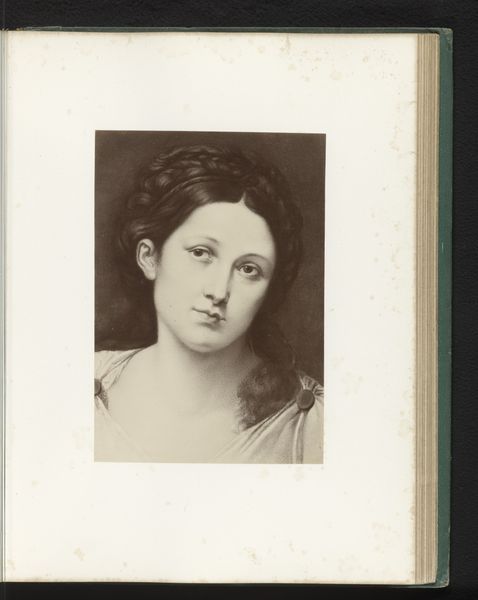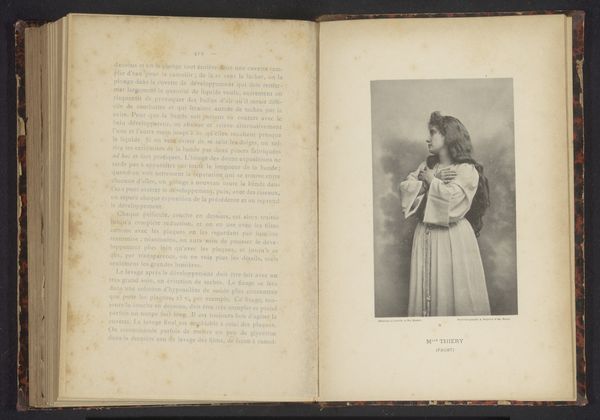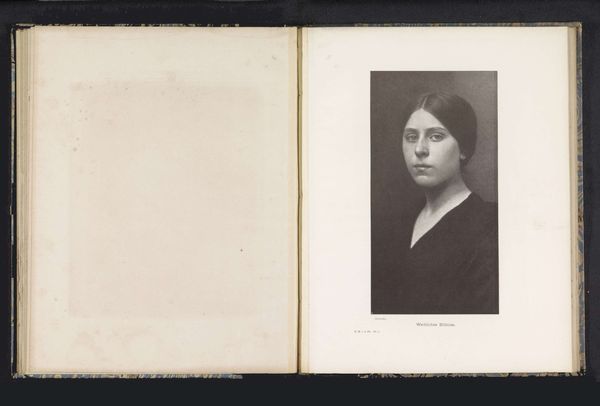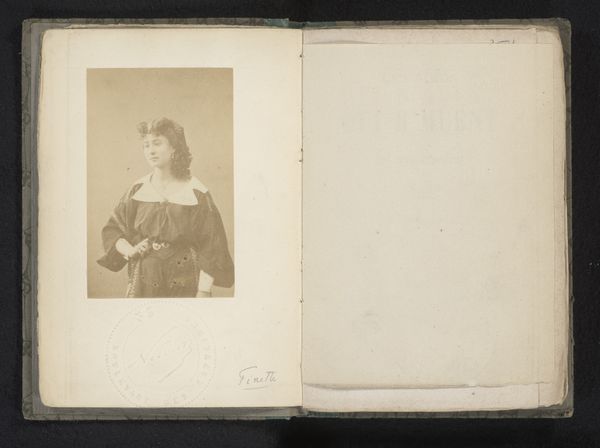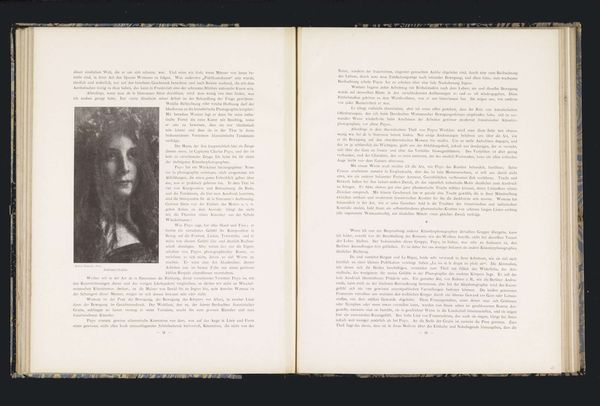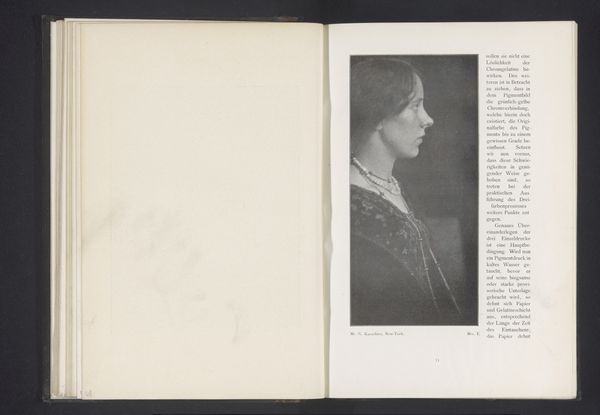
paper, photography
#
portrait
#
paper
#
photography
#
realism
Dimensions: height 176 mm, width 125 mm
Copyright: Rijks Museum: Open Domain
Curator: What a captivating portrait! This is Julia Margaret Cameron's photographic study of Florence Fisher, believed to be taken sometime before 1893. Note its presentation; the work appears to be an affixed photographic print on paper, likely housed within a larger book or portfolio. Editor: There's an undeniable dreaminess to it. It’s soft, a bit melancholic even. The lighting casts a gentle aura around her face. What catches me are those prominent, slightly unsettling roses clustered near her collar. Curator: Indeed. Cameron often manipulated photographic processes to achieve a painterly, almost ethereal quality. Look closely at the soft focus and the limited tonal range; this was a deliberate aesthetic choice, departing from strict representational accuracy. One can almost feel the dissolution of the image into pure light and shade. Editor: It almost feels…unfinished? Like a study rather than a final, polished piece. Yet, I find that compelling! Those deep blacks around the flowers contrast so starkly with her illuminated face. It brings forth, to my eye, a play of light and dark forces, the shadow versus light of her potential... I'm reaching a bit, maybe. Curator: The contrast you identify introduces depth, but perhaps more significantly a subtle drama. Semiotically, the placement of the roses--partially obscuring her form, and the intense blacks framing the otherwise pure white of the gown--draws a distinction that enhances the aesthetic and textural composition, disrupting notions of innocent girlhood. Editor: Ah, that gives me pause! Maybe there’s less melancholy here, and more of an ambiguous confrontation with transition? Still, what I see as charming and fresh could well be technically inexact, or a failed attempt to reach photographic resolution! And her expression! What an elusive read... Curator: Precisely. This very ambiguity might indeed be its strength. Cameron often resisted easy narratives, instead emphasizing feeling and atmosphere. I also detect an intentional tension between realism and something far more subjective. Editor: Well, I’ll carry with me that striking tension now. Not bad for something pulled from a dusty old book! Curator: Yes, quite! It is an enduring piece that, due to her pioneering method and emotive treatment of portraiture, speaks across the ages.
Comments
No comments
Be the first to comment and join the conversation on the ultimate creative platform.
